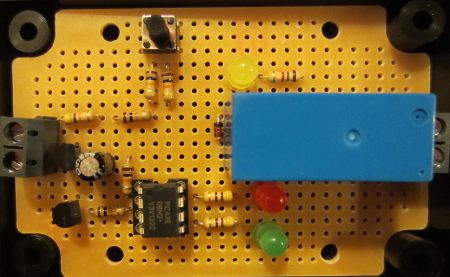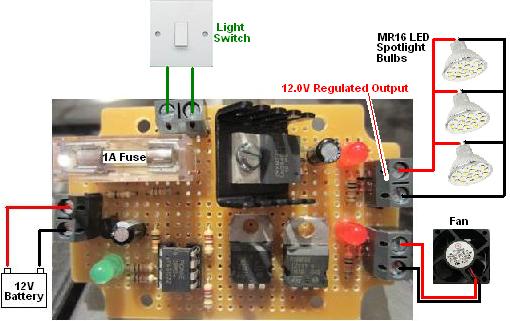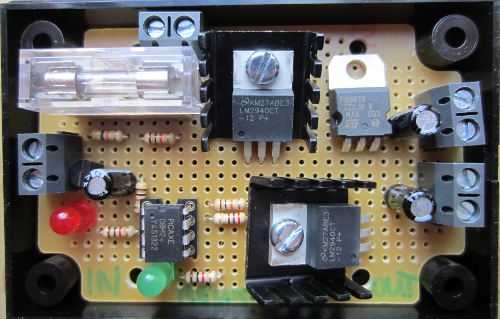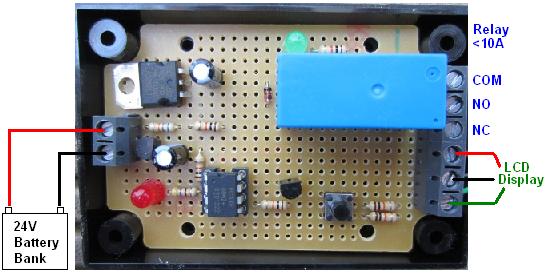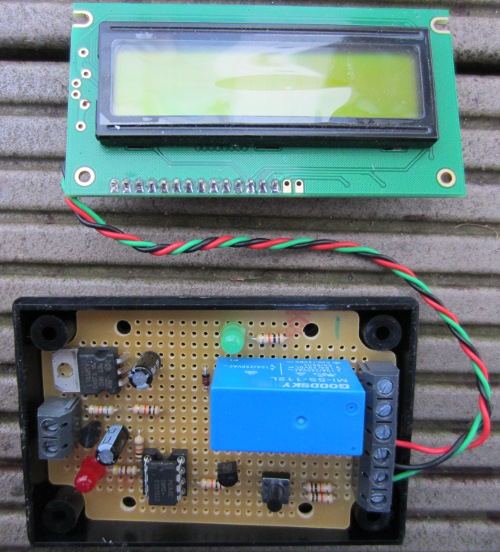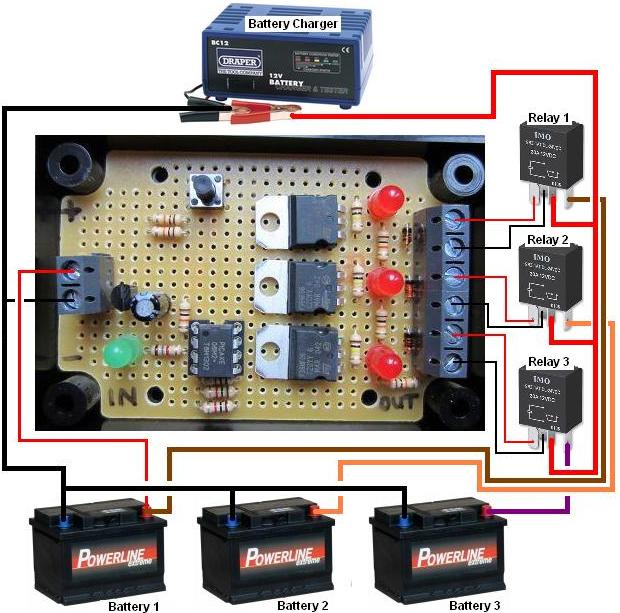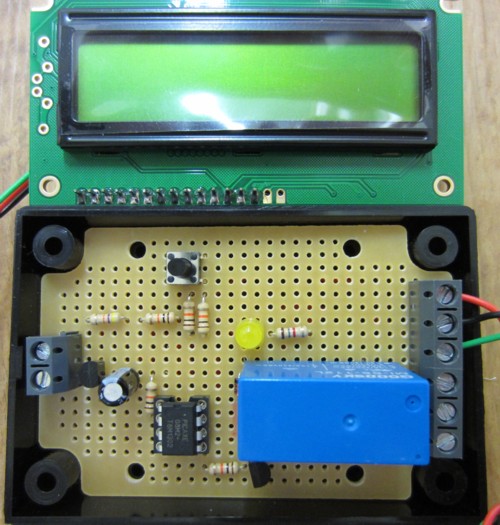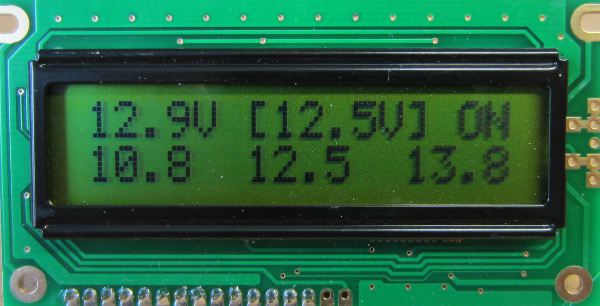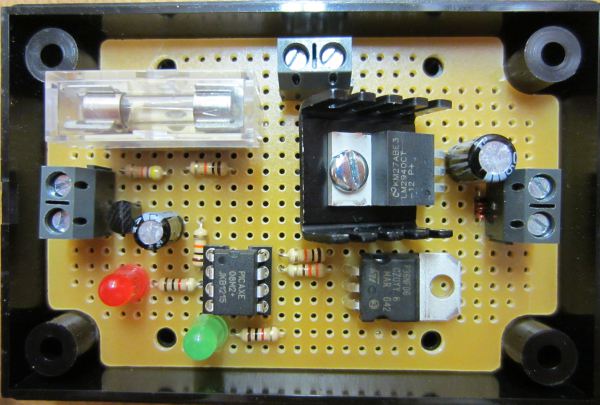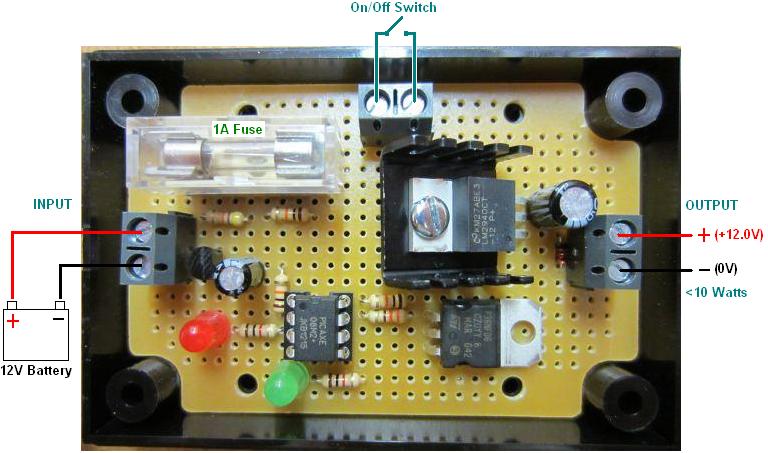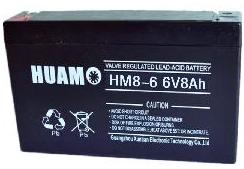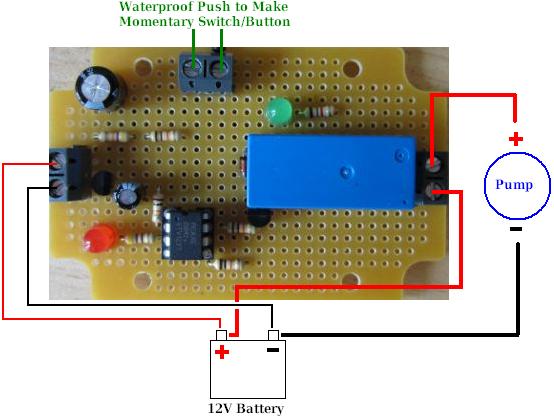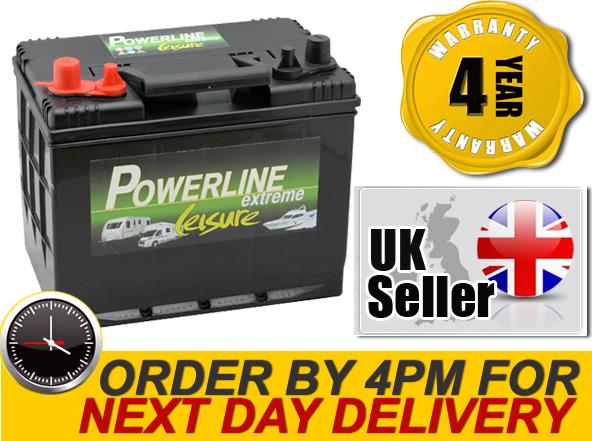Pictured below is a special low voltage disconnect controller designed to switch off an uninterruptible power supply (UPS) when the battery bank to which it is connected is low on charge.
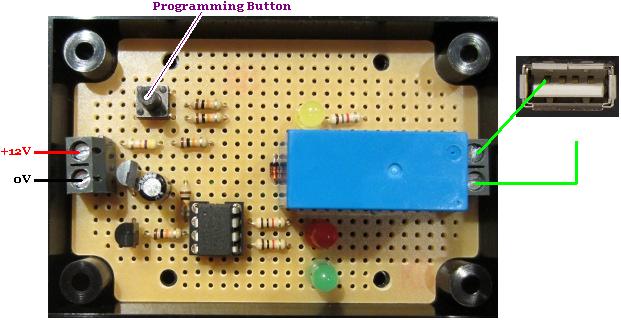 The system for which this controller was built is as follows. A 72V 2.3 kW solar PV array is connected to a 48V 50A MPPT solar charge controller. The charge controller charges a 48V battery bank (made up of an array of 12V batteries); and that feeds a 3.5 kW UPS which supplies electricity to the house.
The system for which this controller was built is as follows. A 72V 2.3 kW solar PV array is connected to a 48V 50A MPPT solar charge controller. The charge controller charges a 48V battery bank (made up of an array of 12V batteries); and that feeds a 3.5 kW UPS which supplies electricity to the house.
The UPS does not have a low voltage disconnect feature and so from time to time the batteries were being discharged too far. Obviously the owner wanted to avoid this as the battery bank is a very expensive part of the system.
This particular UPS has a standard female USB port on it, and if its pin1 is shorted out with one of its other pins, the UPS switches off.
Therefore our controller is a slightly modified version of our standard programmable low voltage disconnect. One of the 12V batteries in the battery bank is constantly monitored. If the voltage measured stays below a user set low voltage threshold (e.g. 12.0V) for 10 seconds, the on board relay closes for 2 seconds which shorts two of pins in the USB socket and forces the UPS to switch off immediately. Therefore the battery bank is protected from being run down excessively.
